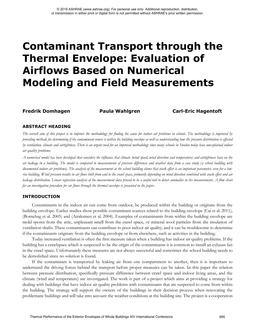Click here to purchase
The overall aim of this project is to improve the methodology for finding the cause for indoor air problems in schools. The methodology is improved by providing methods for determining if the contaminant source is within the building envelope as well as understanding how the pressure distribution is affected by ventilation, climate and airtightness. There is an urgent need for an improved methodology since many schools in Sweden today have unexplained indoor air quality problems. A numerical model has been developed that considers the influence that climate (wind speed, wind direction and temperature) and airtightness have on the air leakage in a building. The model is compared to measurements of pressure differences and weather data from a case study (a school building with documented indoor air problems). The analysis of the measurement at the school building shows that stack effect is an important parameter, even for a low-rise building. Wind pressure results in air flows both from and to the crawl space, primarily depending on wind direction combined with stack effect and air leakage distribution. Linear regression analysis of the measurement data proved to be a useful tool to detect anomalies in the measurements. A flow chart for an investigation procedure for air flows through the thermal envelope is presented in the paper.
Citation: Thermal Buildings XIV 2019
Product Details
- Published:
- 2019
- Number of Pages:
- 9
- Units of Measure:
- Dual
- File Size:
- 1 file , 1.9 MB
- Product Code(s):
- D-Bldgs19-096
